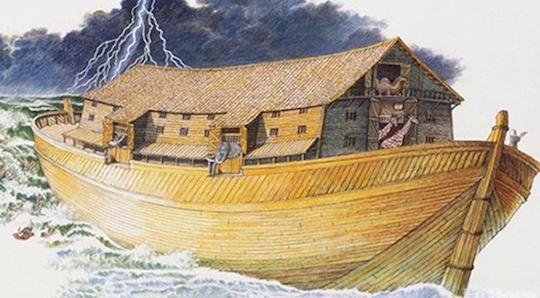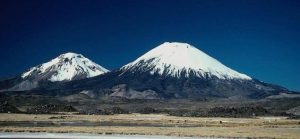Noah’s Ark, the boat that Yahweh had built Noah to survive the universal flood and repopulate the face of the Earth, is said to have settled on the top of Mount Ararat after the flood and was when Noah sent a dove to fly in search of land. On its second flight it returned carrying an olive branch in its beak. This is when he knew that the flood waters had retreated.
Mount Ararat, which is an inactive volcano, is the highest peak in Armenia, located near the border of Iran and Turkey.
There are some reasons to believe that it was not this place where Noah’s Ark was placed. This being so because the mountain, which is an inactive volcano, contains no evidence that it had been submerged under water, since no fossiliferous rocks have been found in it. This suggests that the mountain was formed after the flood. In addition, Genesis accounts refer to the Urartu area, a mountainous area located between the Black Sea and the Caspian Sea, much further south of Mount Ararat. To this we must add that in the mountain no remains of the ark have been found, despite the great efforts that have been made in its search.
There is a large amount of evidence of pagan, Jewish, Christian and Islamic references that indicate that the place where Noah’s ark was kept is Mount Judi, located at the southern end of the Urartu Range, overlooking the plains of the city of Cizre, on the basin of the Tigris river.
Among these references are those of Josephus, the Jewish historian of the first century, who quotes the polyhistorian Berossus about the final resting place of the ark, and places the site in the Jewish kingdom of Adiabense, including Ninive located northwest of Cizre and Mount Judi. Josephus adds that the ark landed in a land where there was a lot of amomum, from the Latin cardomomum, a natural plant from that area of the world that grows in the mountains. Ibn al-Amid, or Macin, wrote a story about the Saracens in the thirteenth century, reporting that the Byzantine emperor, Heraclius, climbed Mount Judi to see the ark in the seventh century AD after the battle of Nineveh, where he defeated the Sasanians in 610 and conquered the Persians.
Other scientific and logical reasons why Mount Judi is considered the site of the Ark is that the story of the biblical ark says that Noah discerned that the flood waters had receded enough when the pigeon returned with the olive branch in its beak, which proves that the location on Mount Ararat is located in a latitude that is too far north for the cultivation of olive trees at that time. This changes the location to Mount Judi, since the olive trees were cultivated in the plains of the Cirze in ancient times.


